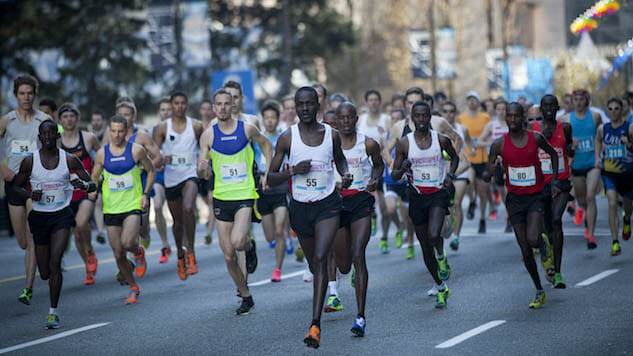Bodies in Balance: The Run-Walk-Run Method For Half-Marathon Training

Millions of people set a goal each year to complete a half-marathon. Some are experienced runners looking to set a personal record, while others are newbies just hoping to make it across the finish line still standing upright. Regardless of your motivation to join the 1.9 million people who complete a half-marathon annually, all runners can physically and mentally benefit from a sound training plan.
Run Walk Run
Often associated with beginners, the Run Walk Run method is a sound training plan that has also found it’s way into the training programs of intermediate and advanced runners looking to increase their overall mileage, reduce their risk of injury and help prevent burnout from high levels of endurance exercise. Created by Olympian Jeff Galloway, one of the most recognized runners in the sport, the Galloway Run Walk Run Method uses a very specific ratio of running (for a predetermined amount of time), followed by a planned walking break (for a predetermined amount of time), and then repeating until your run is complete.
Why It Works
Many runners have found their overall time is not that much different (and some even find they are faster), by adding walk breaks to their training. But how can running the exact same distance—just with a different method—actually make that big of a difference? Galloway explains that according to anthropologists and biologists who study early man, we are mostly adapted to walk, and walk and walk. Running was used by our ancestors in short bursts to get away from a predator in hunting—in short amounts. Makes sense, right? We can adapt our legs and feet to non-stop running but the longer we go without walking, the more stress builds up on weak links, causing injuries.
“Using Run Walk Run gets us back to what we were designed to do,” explains Galloway. “Each early walking break stops the pounding, saves muscle resources and uses less muscle glycogen. This means almost zero injury risk, quick recovery, running strong to the end of all races and the ability to enjoy time with friends and family even after running a marathon,” he says.
What Are the Run-Walk-Run Ratios?
Over the years, Galloway has heard from 500,000+ runners who have used the method and he has analyzed what strategies work best based upon the pace per mile. Based on that information, he has devised a ratio runners can use as a starting point. Here is a sample of what you will find on his website: